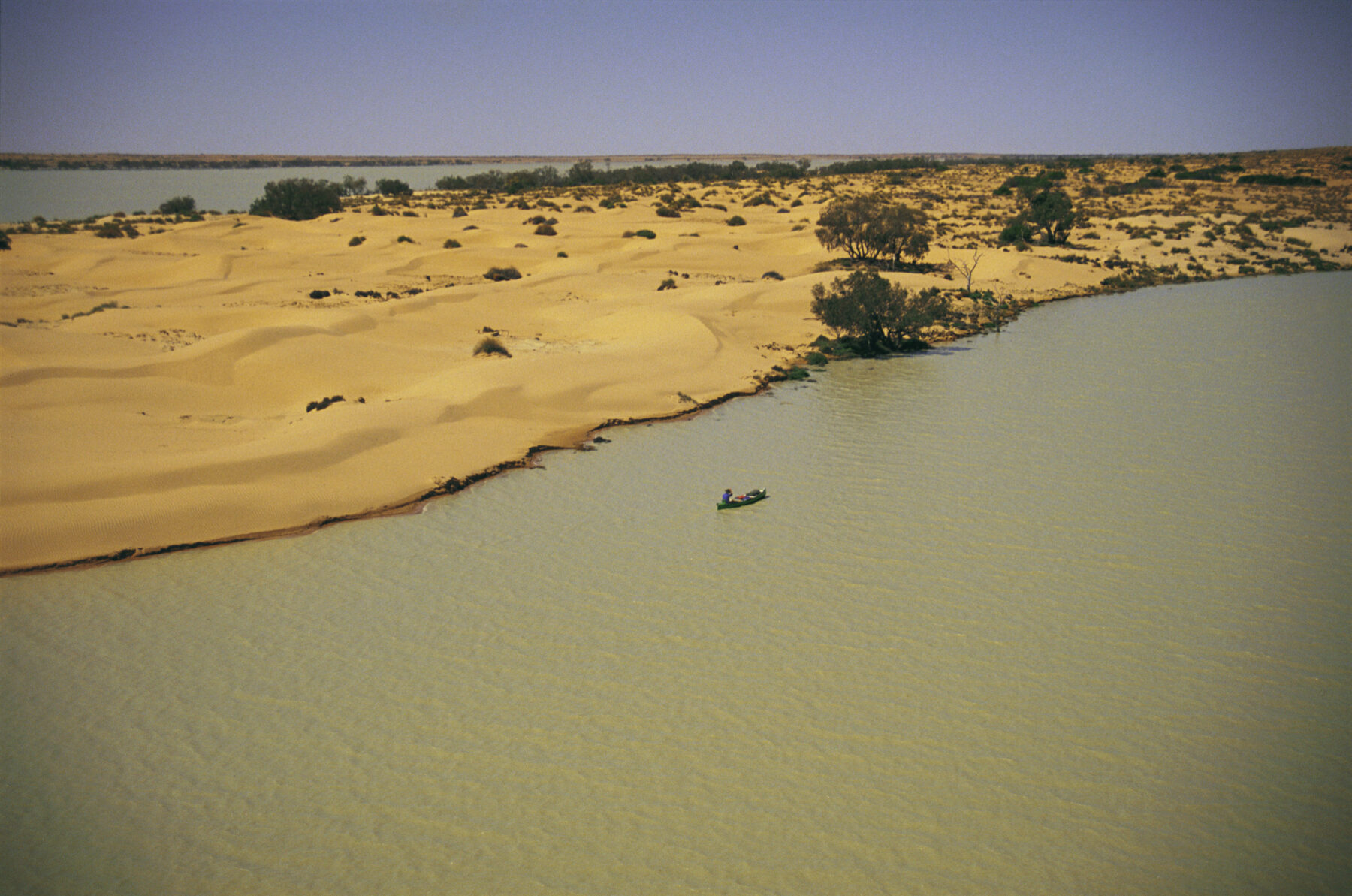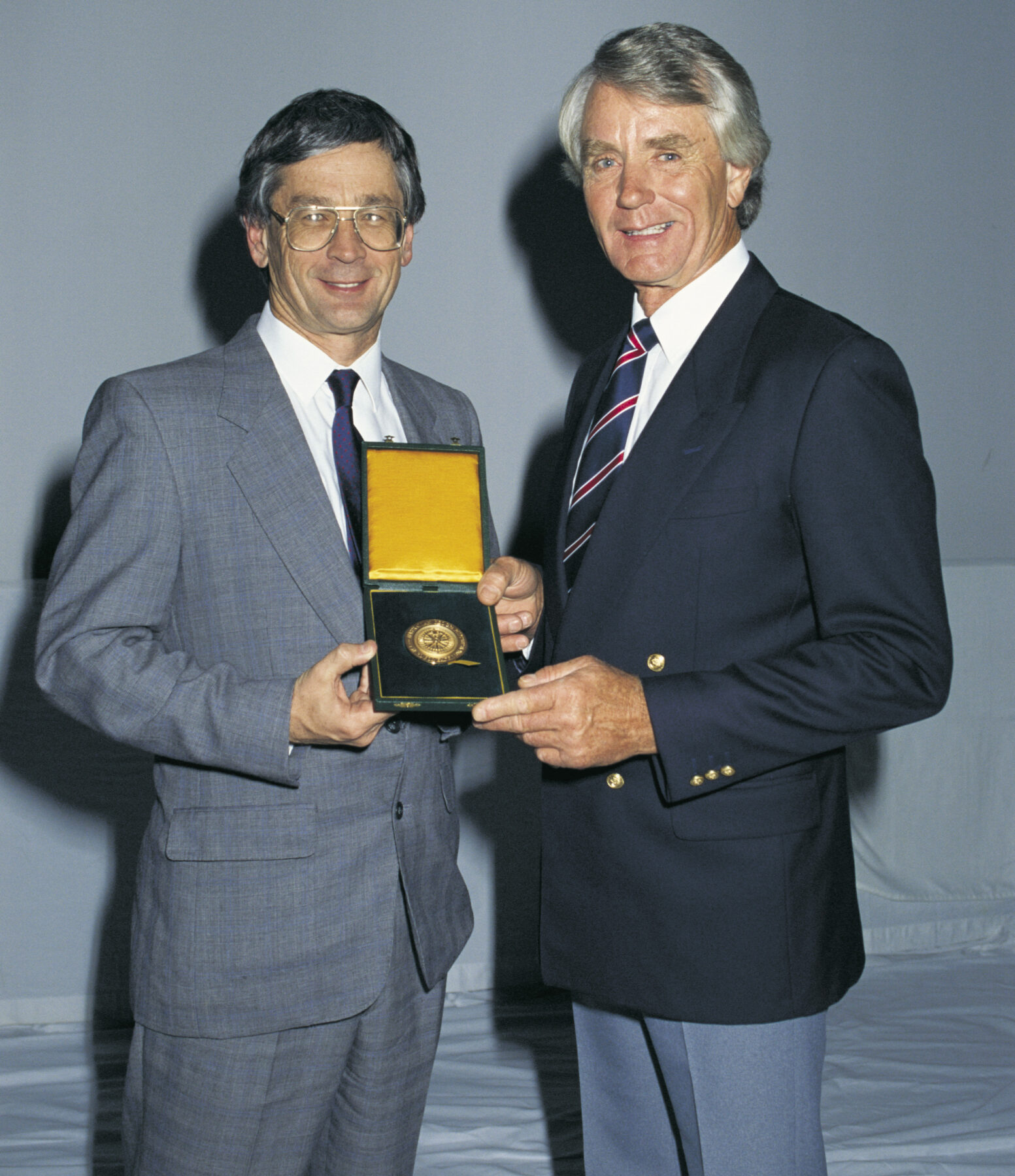Desert voyager: modern-day explorer Denis Bartell OAM remembered

Denis passed away at the age of 90 on Queensland’s Sunshine Coast on 2 January 2024. He was one of Australia’s greatest modern explorers, but perhaps rather a forgotten one today.
His epic Gulf to Gulf Odyssey on foot from north to south of the Australian continent was the subject of a feature story in the second issue of Australian Geographic back in April 1987. He’d set off from Burketown on the Gulf of Carpentaria on 7 May 1985 to raise funds for the Royal Flying Doctor Service. He arrived at Glenelg Jetty in Adelaide on 15 September having trekked 2500km alone across the girth of the continent. A quarter of that journey was spent traversing the rugged, unforgiving Simpson Desert and its unique parallel dune system. He knew the Simpson well by then, having crossed it more than 30 times already in 4WD vehicles.
A year earlier he had walked west to east across its red heart, hoping to discover something of the spirit that drove early explorers, like John McDouall Stuart and the ill-fated Burke and Wills, whose expeditions opened up the continent’s interior to European settlement during the mid-19th century. Denis had studied the logbooks of another adventurer, David Lindsay, who crossed the Simpson by tracking a series of Indigenous-made wells in the 1880s. Denis rediscovered these same wells during his various traverses and made good use of one during the Gulf to Gulf walk when he became lost for a while.
By 1989, Denis was attempting another type of epic journey; one that can only take place when certain rare weather conditions occur. By now he was 55 years old, but still driven by that same restless spirit of curiosity and discovery that had caught the imagination, and support, of Dick Smith AC, founder of Australian Geographic.
Roughly once a decade, floodwaters – usually the result of tropical cyclones in the far north – swell the Thomson and Barcoo rivers in central Queensland and start to move slowly south. These two rivers join near Windorah to become Cooper Creek and waters flowing into the Cooper can eventually make it all the way to Kati-Thanda/Lake Eyre in South Australia if conditions are right. As the creek moves through Australia’s driest region, it splits into myriad braided channels that weave their way across a vast floodplain. The arid landscape springs to life in its replenishing wake, and the waters can take up to five months to enter Lake Eyre.
It was Denis’ dream to paddle his way down on the slow-moving, nutrient-rich floodwaters of Cooper Creek. His journey would take him from the famous Burke and Wills Dig Tree in Queensland, through the Tirari and Strzelecki deserts, to stunning Lake Eyre 615km away.
With little canoeing experience, Denis set off in a 4.5m fibreglass canoe fitted with a small motor, a motorcycle battery-powered radio and enough dried food for 84 days. That year Australian Geographic was conducting one of its regular scientific expeditions on the Cooper system when Denis passed through. “In October 1989, we were flying up Cooper Creek from Lake Eyre towards Lake Hope, when we saw a small canoe on one of the ponds,” says Dick Smith. “The Cooper Creek was flooding all the way through to Lake Eyre – a very rare situation. I landed the helicopter, and it was Denis. He had a small dingo pup with him and was making his way down the Cooper as far as Lake Eyre, where he eventually managed to get to.”

It would be another year before Denis would actually reach his goal. It became apparent to him that the flow was ebbing out when he reached its frontal surge with 275km still to go. He reluctantly abandoned the attempt to reach Lake Eyre, but the following year the floodwaters were once again on the march, and he resumed his voyage once he’d heard the floodwaters had arrived at the great lake. He finally reached the eastern shoreline of Kati-Thanda/Lake Eyre on 7 October 1990.
“This was more than an adventure,” wrote Denis in Australian Geographic, “Rather, I was part of a great happening, the birth of life in a place where it is harder to live than almost anywhere else on earth.”
He received the 1995 Australian Geographic Society Adventurer of the Year gold medallion for his many achievements, including paddling the length of Cooper Creek.
According to Dick Smith, “Denis was one of Australia’s greatest modern-day adventurers and an inspiration to young people.”

A snapshot of Denis’s adventures
• The first solo cross-country vehicle crossing of the Australian continent between its widest points – both ways
• First solo cross-country vehicle crossing of the Simpson Desert, the largest parallel sand dune desert in the world, from east to west
• Boated solo 2350km down the Murray River
• Boated solo 3500km down the Darling-Murray River system
• 3-week solo walk from west to east across the Simpson Desert 390km – no backup vehicles.
• Gulf to Gulf Odyssey; a five-and-a-half-month solo walk across Australia north to south, again passing through the centre of the Simpson Desert. To give some idea of the isolation on this journey, one section involved 560km cross-country (no road, no tracks, compass only) and the greatest distance between towns was 1450km.
• First solar-powered vehicle 3200km crossing of the continent from north to south. Setting a solo world driving record for distance travelled using only the sun’s rays for propulsion
• Two-month solo canoe journey down flooded Cooper Creek towards Kati-Thanda/Lake Eyre
• Reenacted by camel the journey of the first non-Indigenous man to completely cross the Simpson Desert aged 62
• Canoed solo 880km down the Murrumbidgee River aged 64




